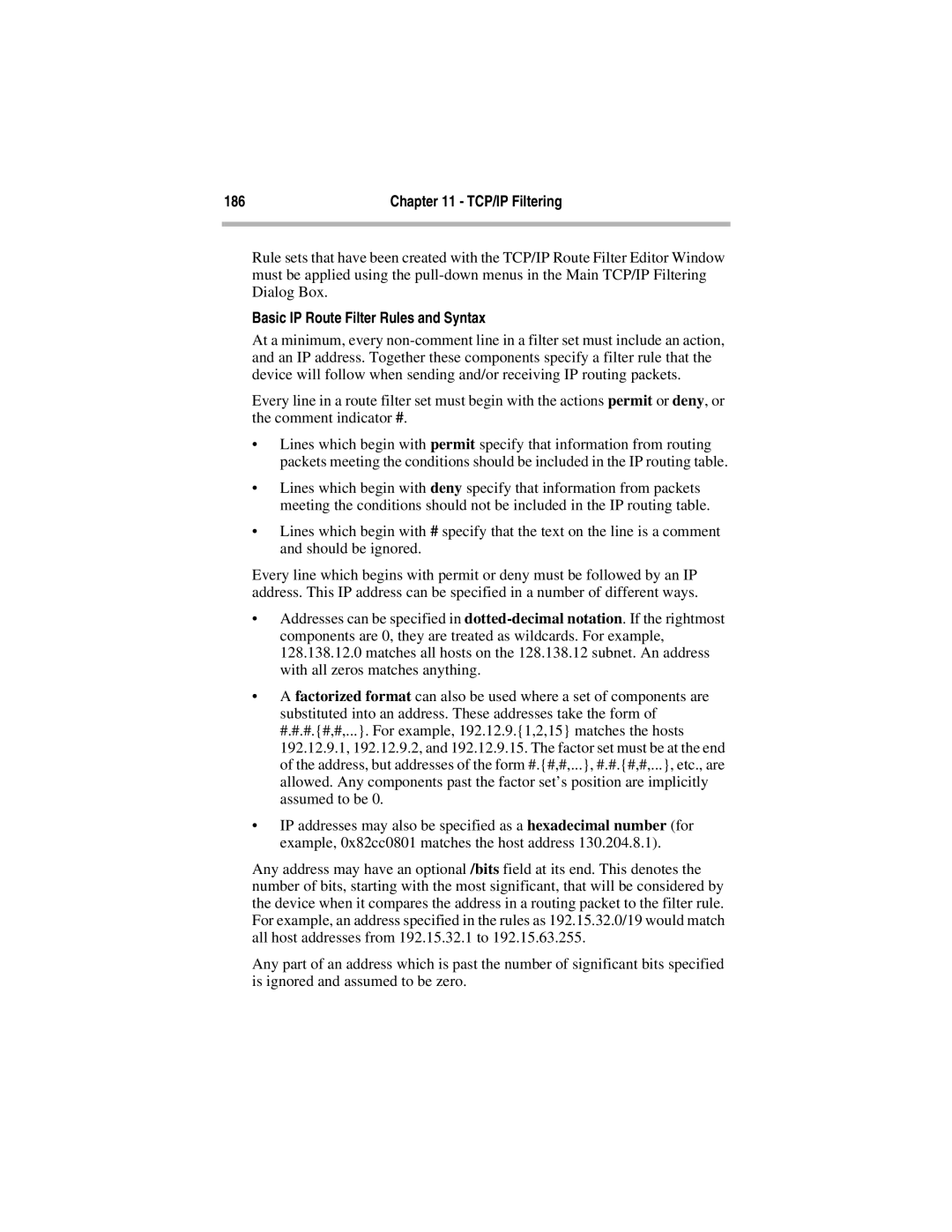186 | Chapter 11 - TCP/IP Filtering |
|
|
Rule sets that have been created with the TCP/IP Route Filter Editor Window must be applied using the
Basic IP Route Filter Rules and Syntax
At a minimum, every
Every line in a route filter set must begin with the actions permit or deny, or the comment indicator #.
•Lines which begin with permit specify that information from routing packets meeting the conditions should be included in the IP routing table.
•Lines which begin with deny specify that information from packets meeting the conditions should not be included in the IP routing table.
•Lines which begin with # specify that the text on the line is a comment and should be ignored.
Every line which begins with permit or deny must be followed by an IP address. This IP address can be specified in a number of different ways.
•Addresses can be specified in
•A factorized format can also be used where a set of components are substituted into an address. These addresses take the form of #.#.#.{#,#,...}. For example, 192.12.9.{1,2,15} matches the hosts 192.12.9.1, 192.12.9.2, and 192.12.9.15. The factor set must be at the end of the address, but addresses of the form #.{#,#,...}, #.#.{#,#,...}, etc., are allowed. Any components past the factor set’s position are implicitly assumed to be 0.
•IP addresses may also be specified as a hexadecimal number (for example, 0x82cc0801 matches the host address 130.204.8.1).
Any address may have an optional /bits field at its end. This denotes the number of bits, starting with the most significant, that will be considered by the device when it compares the address in a routing packet to the filter rule. For example, an address specified in the rules as 192.15.32.0/19 would match all host addresses from 192.15.32.1 to 192.15.63.255.
Any part of an address which is past the number of significant bits specified is ignored and assumed to be zero.
